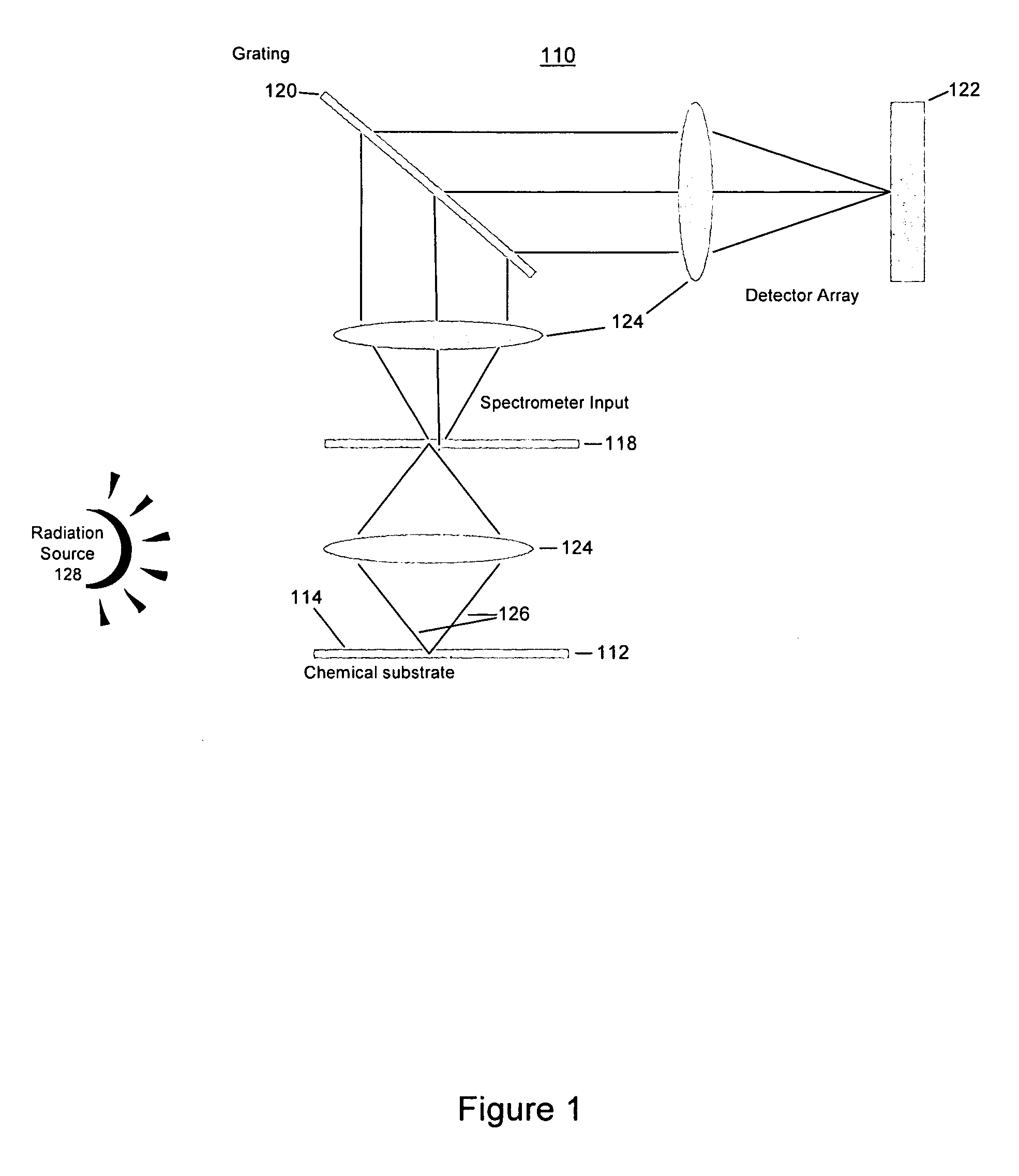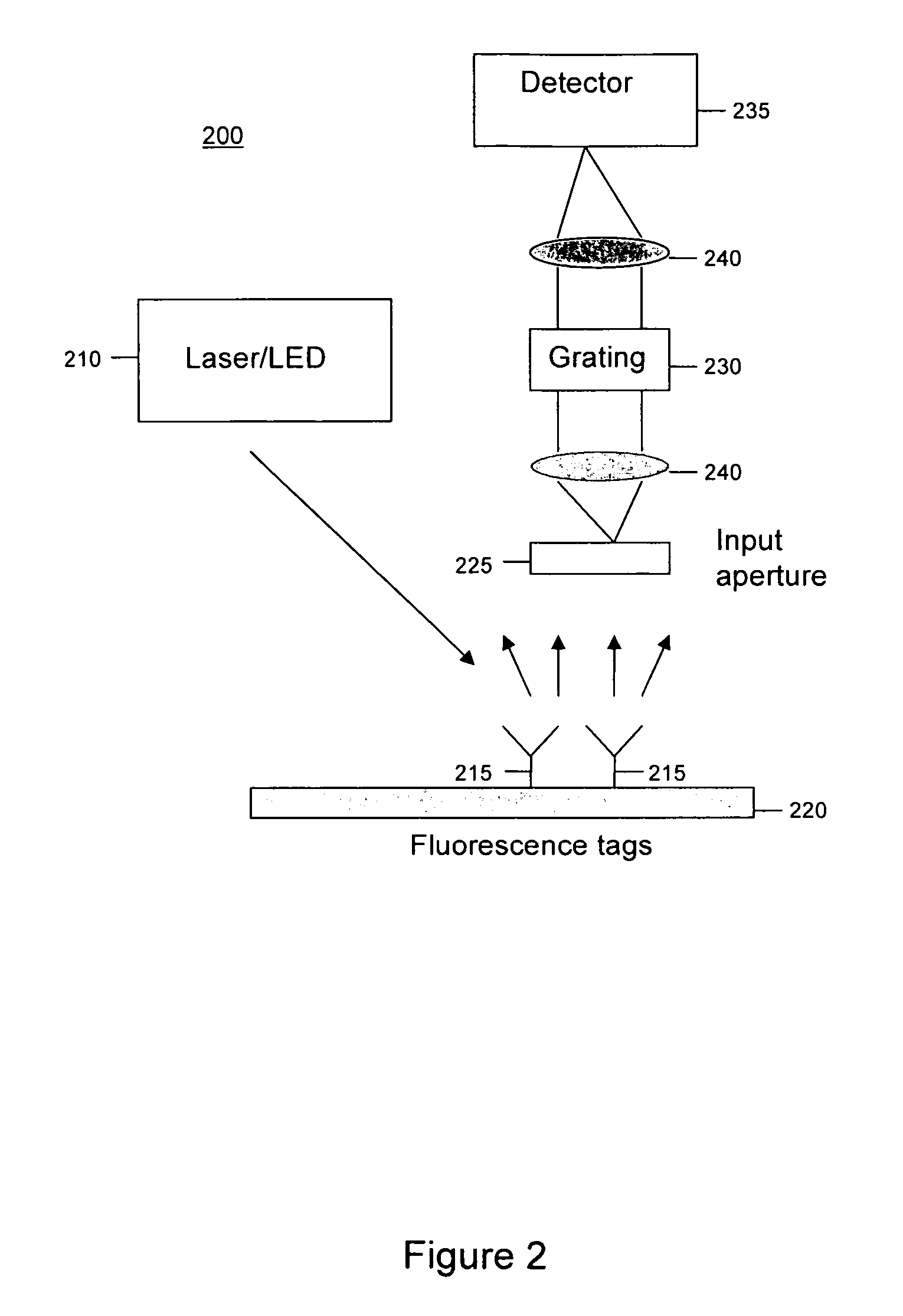Spatially patterned substrates for chemical and biological sensing
a substrate and spatial pattern technology, applied in the field of spatial pattern substrates, can solve the problems of inability to detect absorption or spectral scattering features from surface interactions, the primary challenge of sensor design, and the inability to achieve isolation from strong background signals, so as to enhance spectroscopic signal isolation and detection, and improve sensing
- Summary
- Abstract
- Description
- Claims
- Application Information
AI Technical Summary
Benefits of technology
Problems solved by technology
Method used
Image
Examples
Embodiment Construction
[0023] While specific embodiments of the invention are discussed herein and are illustrated in the drawings appended hereto, the invention encompasses a broader scope than the specific subject matter described and illustrated. As would be appreciated by those skilled in the art, the embodiments described herein provide but a few examples of the broad scope of the invention. There is no intention to limit the scope of the invention only to the embodiments described.
[0024]FIG. 1 illustrates a conventional dispersive spectrometer 110. Spectrometer 110 may include a substrate 112 that provides a testing surface 114, a source 128, a mask 118 that includes one or more transmissive and opaque elements, a diffractive element 120, a detector array 122, one or more optical elements 124 that guide radiation generated by a source 128 within spectrometer 110, and / or other components. The term “radiation” used herein includes all types of electromagnetic radiation, such as ultraviolet (UV) radia...
PUM
 Login to View More
Login to View More Abstract
Description
Claims
Application Information
 Login to View More
Login to View More - R&D
- Intellectual Property
- Life Sciences
- Materials
- Tech Scout
- Unparalleled Data Quality
- Higher Quality Content
- 60% Fewer Hallucinations
Browse by: Latest US Patents, China's latest patents, Technical Efficacy Thesaurus, Application Domain, Technology Topic, Popular Technical Reports.
© 2025 PatSnap. All rights reserved.Legal|Privacy policy|Modern Slavery Act Transparency Statement|Sitemap|About US| Contact US: help@patsnap.com



